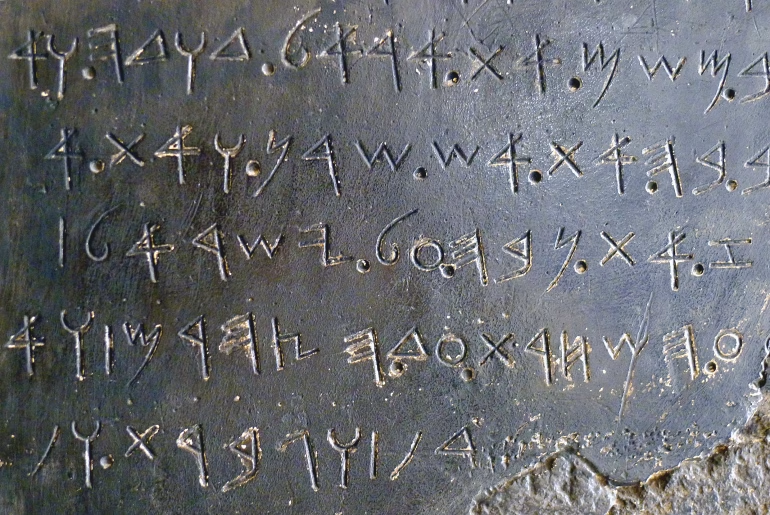Mohd Elfie Nieshaem Juferi
Three hundred years after the time of Jesus(P), there were many different versions of the Gospel story and the teachings of Jesus(P).[1] Then, as now, no one was quite certain who wrote them, or when or where they were written. The teachings of the Christian Church varies from one area to another. Different sects of Christianity evolved around these different teachings and there arose a need to decide on a uniform, unified code on which to base future Christian doctrine.
Bruce Metzger also comments regarding the development of the canonization of the current New Testament, that
For early Jewish Christians the Bible consisted of the Old Testament and some Jewish apocryphal literature. Along with this written authority went traditions, chiefly oral, of sayings attributed to Jesus. On the other hand, authors who belonged to the ‘Hellenistic Wing’ of the Church refer more frequently to writings that later came to be included in the New Testament. At the same time, however, they very rarely regarded such documents as ‘Scripture’.
Furthermore, there was as yet no conception of the duty of exact quotation from books that were not yet in the full sense canonical. Consequently, it is sometimes exceedingly difficult to ascertain which New Testament books were known to early Christian writers ; our evidence does not become clear until the end of second century.[2]
In other words, there was no specific ‘canon’ of the New Testament known to the early Christians. The ‘canon’ that we possess today was a late development. Furthermore, even those who adhere to the documents that form the ‘canon’ of the New Testament today does not regard them as “Scripture”.
In the year 325 C.E., it was agreed that representatives from several different sects of Christianity would have a meeting and each would bring with them the writings upon which they were basing their teachings. Some compromise version of Christian teachings would have to be agreed upon for the Christian church to grow as a unit, as each separate sect spread different versions of belief. The meeting called the Council of Nicea was held in Nicea, Turkey and the disputes among all those calling themselves Christians were intense. The disputes were not only about the points of Christian doctrine, but also about which of these many writings were authentic. In one letter from Fauste to St. Augustine, Fauste says
It is thus that your predecessors have inserted in the scriptures of our Lord many things, which, although they carry His name agree not with His doctrines. This is not surprising, since that we have often proved that these things have not been written by Himself, nor by his apostles, but that for the greater part they are founded upon tales, upon vague reports and put together by I know not what, half-Jews, but with little agreement between them, and which they have nevertheless published under the names of the Apostles of our Lord, and have thus attributed to them their own errors and their lies.[3]
Bart Ehrman informs us that the canonization of the New Testament was influenced and supported by the Emperor Constantine of the Roman Empire.
The Roman empire was a pagan empire, however, it was the dominant “superpower” of the time. Anyone who could enlist its aid would have an unconquerable ally at their side and would themselves be undefeatable. On the Roman side, Emperor Constantine was greatly troubled by the swelling ranks of his Christian subjects and the great division among their ranks which did not bode well for the continued stability of his empire.
Most of these fringe sects now began to fade into insignificance and the matter was now left between those who believed in the Unity of God and those who believed in a “Trinity.” The Roman empire’s support fluctuated between these two groups for a long time until the Trinitarian’s finally gained the upper hand and all but wiped the Unitarians off the face of the earth. Over the next centuries they slowly selected and collected the “truly inspired” gospels into one volume which later became the “New Testament.” They burned all other gospels. Many sweeping campaigns of “Inquisition” were launched. Everyone found possessing any of these “false” Gospels was put to death and his Gospel burned.
The classical understanding of the relationship of orthodoxy and heresy met a devastating challenge in 1934 with the publication of Walter Bauer’s Rechtgl?ubigkeit und Ketzerei im ?ltesten Christentum, possibly the most significant book on early Christianity written in modern times. Bauer argued that the early Christian church in fact did not comprise a single orthodoxy from which emerged a variety of competing heretical minorities. Instead, early Christianity embodied a number of divergent forms, no one of which represented the clear and powerful majority of believers against all others. In some regions, what was later to be termed ‘heresy’ was in fact the original and only form of Christianity. In other regions, views later deemed heretical coexisted with views that would come to be embraced by the church as a whole, with most believers not drawing hard and fast lines in demarcation between the competing views. To this extent, ‘orthodoxy,’ in the sense of a unified group advocating an apostolic doctrine accepted by the majority of Christians everywhere, did not exist in the second and third centuries. Nor was ‘heresy’ secondarily derived from an original teaching through an infusion of Jewish ideas or pagan philosophy.
Beliefs that were, at later times, embraced as orthodoxy and condemned as heresy were in fact competing interpretations of Christianity, one of which eventually (but not initially) acquired domination because of singular historical and social forces. Only when one social group had exerted itself sufficiently over the rest of Christendom did a ‘majority’ opinion emerge ; only then did the ‘right belief’ represent the view of the Christian church at large.[4]
The text of the New Testament developed freely for quite some time depending upon the whims and fancies of Christians. As Kurt and Barbara Aland tells us
Until the beginning of the fourth century the text of the New Testament developed freely. It was the “living text” in the Greek literary tradition, unlike the text of the Hebrew Old Testament, which was subject to strict controls because (in the oriental tradition) the consonantal text was holy. And the New Testament text continued to be a “living text” as long as it remained a manuscript tradition, even when the Byzantine church molded it to the procrustean bed of the standard and officially prescribed text. Even for later scribes, for example, the parallel passages of the Gospels were so familiar that they would adapt the text of one Gospel to that of another. They also felt themselves free to make corrections in the text, improving it by their own standard of correctness, whether grammatically, stylistically, or more substantively. This was all the more true of the early period, when the text had not been attained canonical status, especially in the earliest period when Christians considered themselves to be filled with the Spirit. As a consequence the text of the early period was many-faceted, and each manuscript had its own peculiar character.[5]
In face of all the evidences, we still cannot see the justification for the claim of the Christian missionaries that the New Testament is wholly the “inerrant” word of God.
References
[1] Isaac Asimov, Asimov’s Guide to the Bible : The Old and New Testaments (New York : Avenue Books, 1981)
[2] Bruce M Metzger, The Canon Of The New Testament : Its Origin, Significance & Development (Clarendon Press, Oxford, 1997)
[3] Thomas Paine, The Age of Reason (New York, Prometheus Press, 1984)
[4] Bart Ehrman, The Orthodox Corruption of Scripture, p. 7
[5] Aland & Aland, The Text Of The New Testament, p. 69
Appendix : Causes of Errors In the Transmission of the New Testament
Bruce M. Metzger has outlined the causes of error in the transmission of the text of the New Testament, in a separate chapter of his book, The Text of The New Testament (Oxford, The University Press, 1964). He has broadly divided such errors into two categories : (a) Unintentional Changes, and (b) Intentional Changes. A summary of the unintentional changes he mentions, follows.
Errors Arising from Faulty Eyesight : This maybe of any one of different natures. For example, a scribe with such a problem, found it difficult to distinguish between Greek letters that resemble one another ; this was especially the case where the previous copyist had not written with care. Then, there can be a problem of jumping from one line to other and thereby omitting a line or a few lines, if both the lines ended or began with similar words.
Errors Arising from Faulty Hearing : Such problem can especially arise when the scribe is making a copy from dictation. A scribe is more prone to this problem in the case of two or more words with the same pronunciation.
Errors of the Mind : This category of errors seem to have arisen during the particular instance when the copyist was holding a sentence or a phrase in his mind, whether after looking at the previous copy, if the copy was made by looking at a previous copy, or after hearing the sentence, if the copy was made from dictation. This error can result in a number of variations in the text. For example, the copyist may unintentionally substitute a word with a synonymous word. The sequence of words may be unintentionally altered. The letters of a word may be so transported that causes a different word to be written in the copy being so made. The passage being so written may be replaced in the mind of the scribe with a similar passage that is better known to the scribe.
Errors of Judgement : Such errors may arise when a scribe mistakes some words written on the margin of a previously written manuscript to be part of the text being written. (pp. 186 – 195)
A summary of the unintentional changes, the author mentions, is give below :
Changes Involving Spelling and Grammar : The scribe may, with a motive of correction, change or alter the spelling of a word or the sequence of words in a sentence.
Harmonistic Corruptions : Since the monks normally knew portions of the Scriptures by heart, they tended to make changes in the text to harmonize discordant parallels or quotations.
Addition of Natural Complements and Similar Adjuncts : Where the scribe thought a phrase to be missing a few words that, in his opinion, should have been there, he added such words as he thought were obviously missing and were meant to be there.
Clearing up Historical and Geographical Difficulties : The scribes who were aware of a particular historical or geographical reference being made in the text and found that reference to be incorrect in some way, tended to correct such reference.
Conflation of Readings : When the same passage was given differently in different manuscripts most scribes incorporated both readings in the new copy which they were writing.
Alterations made because of Doctrinal Considerations : When the words of the manuscript which was used as a source differed from or negated the doctrine to which the scribe ascribed himself, he was tempted to alter the words in a way that prevented the particular doctrine from losing its ground.
Addition of Miscellaneous Details : Some scribes had the tendency of adding details to some event that was referred to in the text. (pp. 195 – 206)
The author has given a number of examples under each sub-category of these changes.




